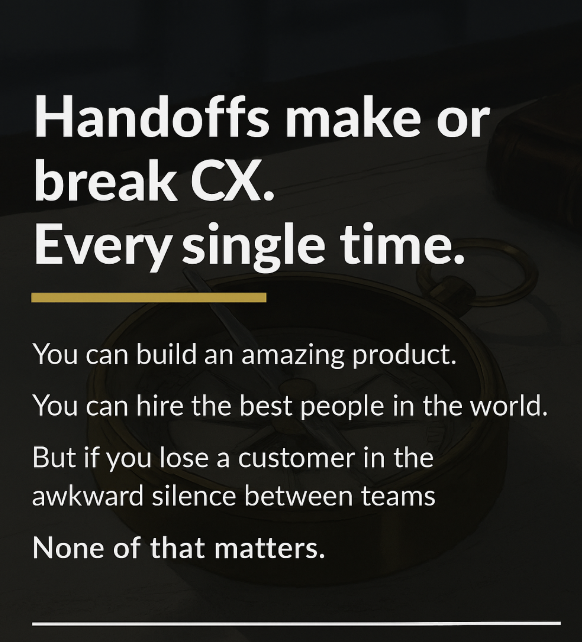How to Build Adoption Milestones That Actually Drive Outcomes
- Johan Gedde
- Jun 5
- 2 min read

A 4-Step Framework for Turning Activity into Progress
Most teams track adoption the wrong way.
They define milestones based on internal tasks, things like “training complete” or “feature activated.”
And that’s how you end up with a journey full of activity…
But no real success.
❌ Why Most Adoption Milestones Fall Short
When adoption milestones are built around internal steps, not customer progress, you’re tracking:
Motion, not momentum
Activity, not value
Tasks, not outcomes
You might feel like things are moving. But your customer? They’re standing still.
🔁 We Flipped the Approach
Instead of starting with a project plan, we start with the outcome:
🧭 Ask These Two Questions:
What does success look like for this customer segment?
What key milestones actually help them get there?
These answers become your adoption compass. From there, every milestone must lead toward real progress—not just task completion.
🔧 The 4-Step Adoption Milestone Framework
Here’s how we build outcome-based adoption journeys across different segments and use cases:
1️⃣ Segment Customers
Not every customer defines success the same way. So start here:
Segment by revenue, use case, or product edition
Tailor your milestones based on what success actually means to each group
A milestone for a small startup won’t look the same as one for a 500-seat enterprise.
2️⃣ Define Outcome-Based Goals
Forget internal process goals like “product fully deployed.”
Instead, define goals like:
“First workflow automated”
“Reporting set up to track business impact”
“Team using product weekly in key workflow”
Your milestones should ladder up to why the customer bought—not just what you want them to use.
3️⃣ Build Adoption Milestones That Reflect Progress
Every milestone should signal meaningful forward movement.
Avoid generic checkmarks like:
“Training complete”
“Admin invited 3 users”
Unless they directly contribute to the customer achieving outcomes, they’re filler.
Good milestones = clear, value-aligned progress.
4️⃣ Track Signals and Trigger Engagement
Adoption isn’t a static checklist. It’s a behavior you need to reinforce.
Use systems or AI to track milestone velocity
Identify slowdowns before they turn into churn
Trigger contextual nudges tied to the customer’s current progress—not a preset schedule
This turns your CS motion from reactive firefighting into proactive guidance.
✅ The Bottom Line
Adoption is only meaningful when it reflects movement toward outcomes.
Otherwise, you’re tracking motion—not momentum.
🤖 With the Right Signal Engine...
Your Customer Success team stops reacting. And starts leading—toward measurable customer wins.
Not just more usage. More value.
👇 Let’s Talk
How are you defining meaningful adoption milestones in your journey design?
I’d love to hear how you're approaching it.
✅ Follow me on LinkedIn for execution-first Customer Success frameworks





Comments